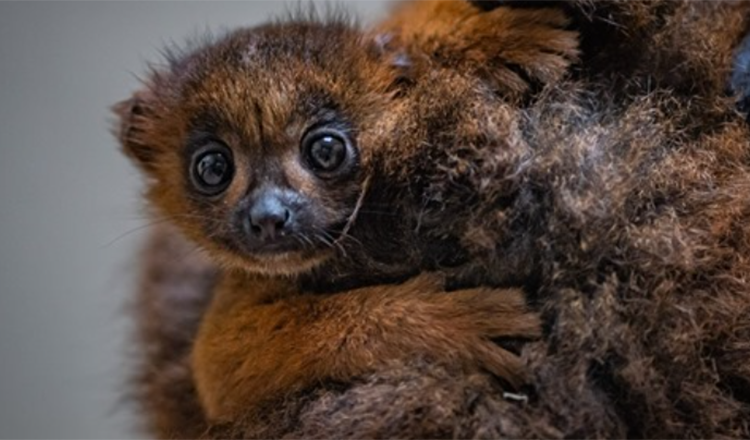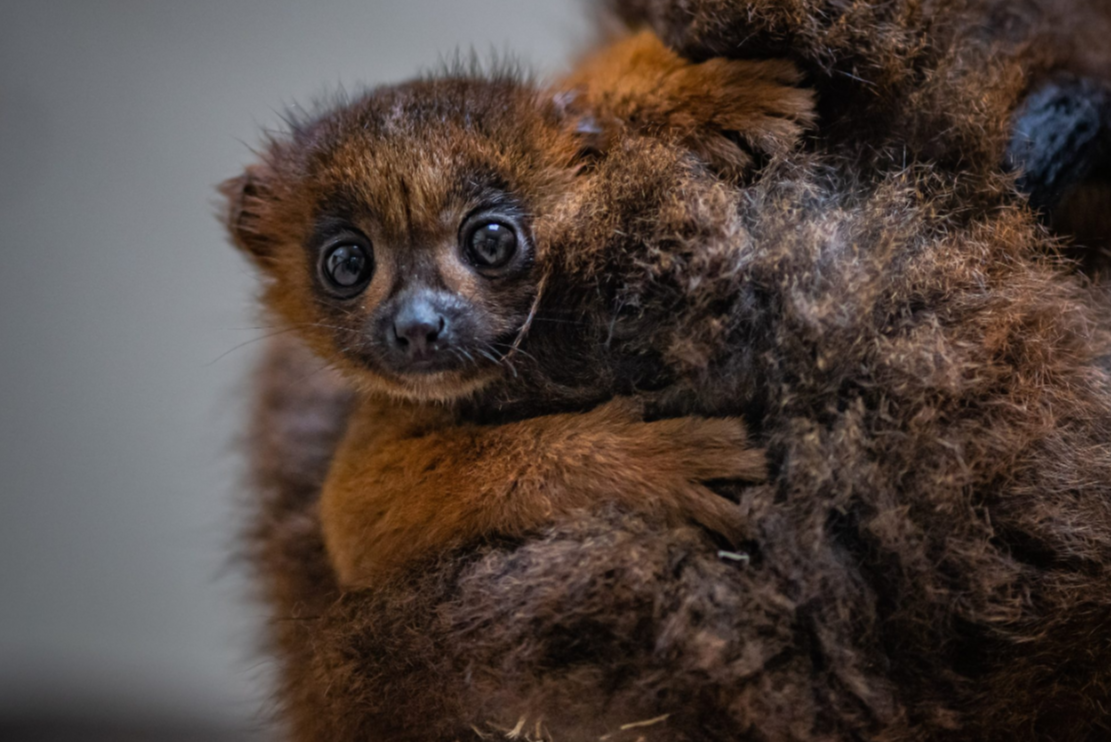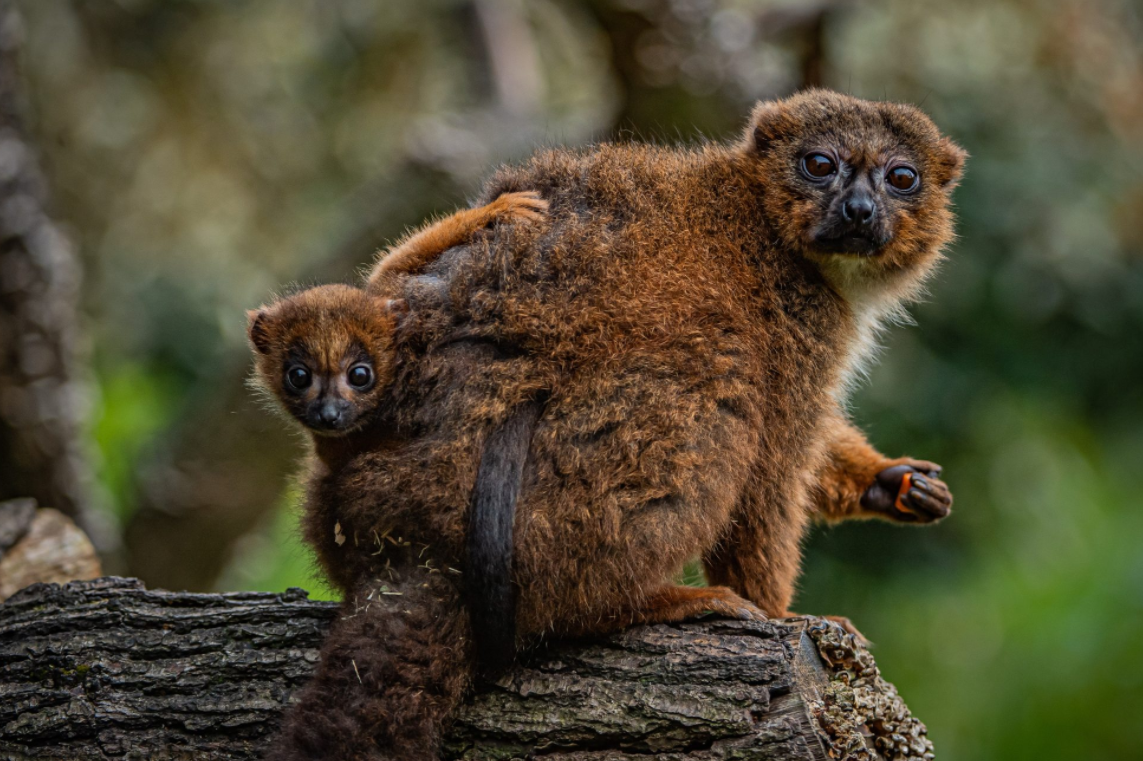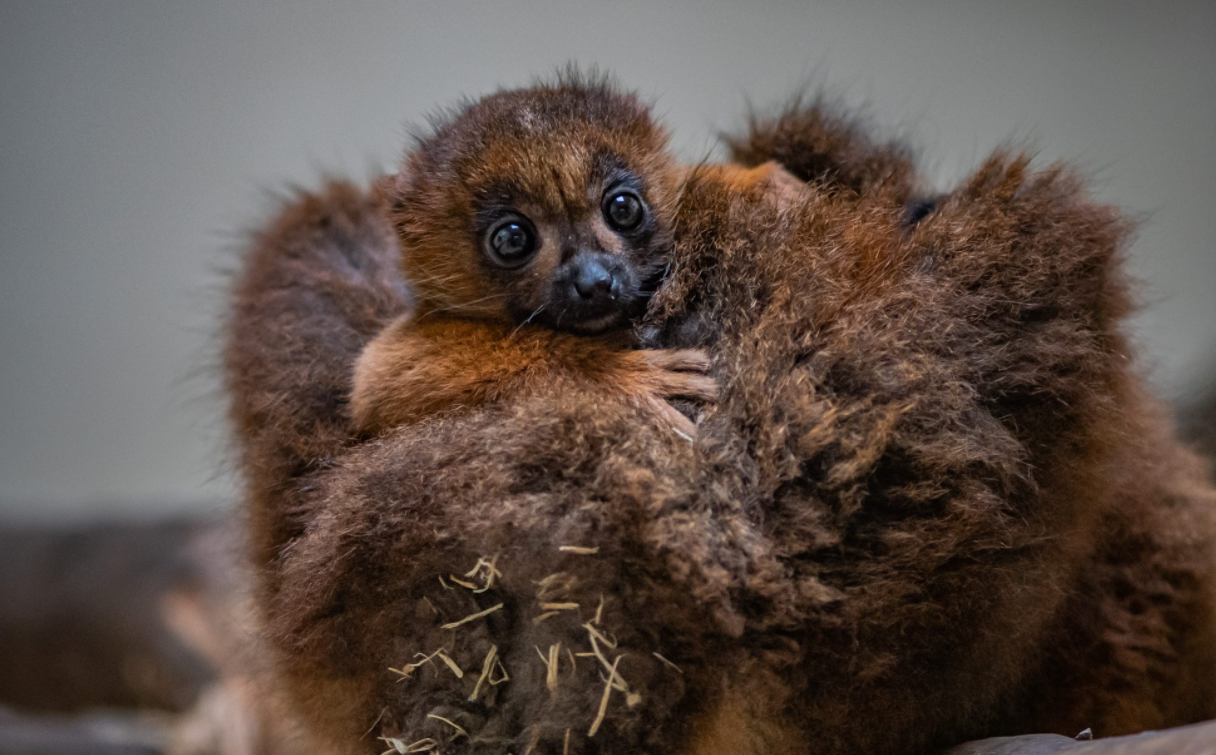Chester Zoo Welcomes its First Red-Bellied Lemur Baby: It’s a ‘Real Cause for Celebration’

Aina, the 4-year-old red-bellied lemur, gave birth to her baby six weeks ago at the Chester Zoo after a 127-day pregnancy

The English zoo announced in a press release that it welcomed a baby red-bellied lemur six weeks ago. This rare baby primate is the first red-bellied lemur born at the Chester Zoo and is the child of 4-year-old Aina and 8-year-old Frej, writes people.
While the baby was born over a month ago, the little lemur is just getting large enough to spot. The newborn — whose sex unknown — spends their days clinging to their mother’s thick fur. Speaking of mom, Aina, who gave birth after a 127-day pregnancy, is doing a great job as a first-time parent.
“Aina is a first-time mum who’s really taking motherhood in her stride — she’s very confident with her new addition. The baby is always seen clinging on tightly to her, which is exactly what we want to see, and this lovely little lemur looks incredibly content hidden in among mum’s warm fur,” Claire Parry, the assistant team manager of primates at Chester Zoo, said in a statement.


The arrival of the red-bellied lemur baby is exciting for the zoo and conservationists worldwide.
“With lemurs considered as being the most endangered group of mammals in the world by the IUCN, every birth is significant. Lemurs are endemic to Madagascar, where they are severely under threat, with over 94% of all lemur populations at risk of disappearing forever. Sadly, we know that many larger lemur species have already become extinct,” Mike Jordan, director of animal and plants at the zoo, shared.


“The birth of any lemur is real cause for celebration as these primates are vulnerable to extinction in the wild, and every new arrival is a vital addition to the endangered species breeding program,” Parry added.

Aina, Frej, and their baby are celebrating the birth in their own way, spending time together as they would in the wild. According to the zoo, red-bellied lemurs in the wild form “a monogamous pairing and they live in a small family troop of mum, dad, and offspring.”
This story originally appeared on people.com
